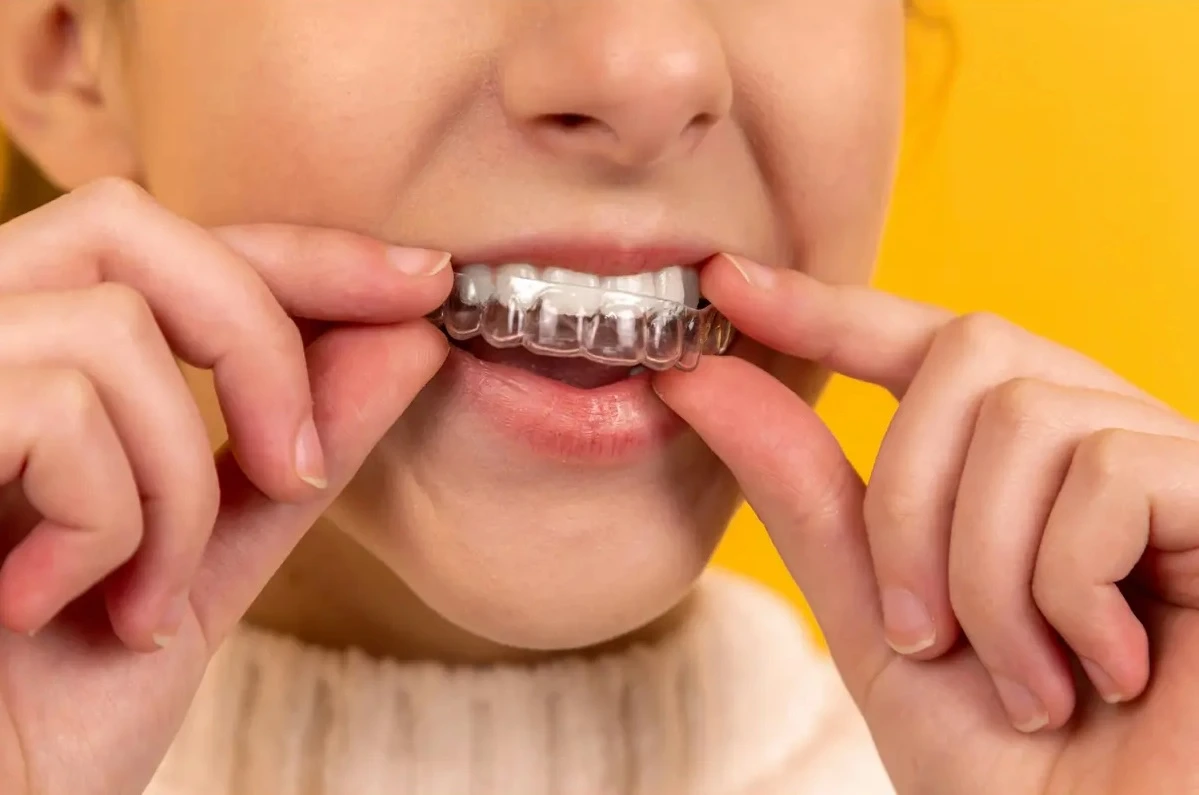


Imagine smiling confidently without worrying about crooked teeth or uncomfortable metal brackets. That’s the promise of Invisalign, a modern orthodontic solution that straightens teeth discreetly and comfortably. Unlike traditional braces, Invisalign uses clear, removable aligners to gradually shift teeth into their ideal position.
Whether you’ve avoided braces as a teen or want a subtle correction as an adult, Invisalign offers a solution that fits your lifestyle. This guide explores everything you need to know—from how Invisalign works to the benefits, treatment process, and tips for maintaining your smile.
Invisalign uses a series of custom-made, transparent aligners designed specifically for your teeth. Each aligner applies gentle pressure to move teeth gradually.
Your dentist takes 3D scans of your teeth.
A personalized treatment plan is created, showing the movement of your teeth over time.
You wear each set of aligners for about 1–2 weeks before switching to the next set. Over several months, your teeth gradually shift into alignment. The result is a straighter smile without the hassle or appearance of traditional braces.
Invisalign isn’t just for minor corrections. Many dental issues can be addressed, including:
Invisalign is especially popular among adults and teens who want discreet orthodontic treatment while maintaining a natural appearance. Your dentist can assess your situation and determine if Invisalign is right for you.
Choosing Invisalign comes with several advantages over traditional braces:
Your dentist evaluates your teeth and bite, takes scans, and develops a treatment plan.
Each set of aligners is worn 20–22 hours per day, removed only for eating and cleaning. Consistency is key for effective results.
Your dentist will schedule check-ins every 6–8 weeks to ensure your teeth are moving as planned.
After finishing all aligners, a retainer may be provided to maintain your new smile.
While traditional braces remain effective, Invisalign offers unique benefits:
However, severe orthodontic issues may still require braces. Your dentist will recommend the best option for your specific needs.
Myth: Invisalign is only for minor corrections.
Fact: Invisalign can address a wide range of dental alignment issues, including complex cases with guidance from an experienced dentist.
Myth: Treatment takes longer than braces.
Fact: In many cases, Invisalign is as fast—or faster—than traditional braces, depending on the severity of misalignment.
Myth: You can skip wearing aligners.
Fact: Aligners must be worn consistently to achieve results; skipping hours can delay treatment.
Q: Does Invisalign hurt?
A: Some pressure is normal when switching aligners, but discomfort is typically mild and temporary.
Q: How long does treatment take?
A: Most patients complete treatment in 12–18 months, depending on their individual plan.
Q: Can I eat normally?
A: Yes! Simply remove your aligners while eating or drinking anything other than water.
Q: Do I need a retainer after Invisalign?
A: Yes, a retainer helps maintain your newly aligned teeth and prevents shifting.
Q: Can adults get Invisalign?
A: Absolutely! Invisalign is ideal for adults who want a discreet and effective orthodontic solution.
Invisalign offers a comfortable, discreet, and effective way to straighten teeth without traditional metal braces. With consistent wear, professional guidance, and proper care, you can achieve the smile you’ve always wanted.
If you’re ready to explore Invisalign or have questions about your treatment options, schedule a consultation with an experienced dentist today.
Consistently rated 5 out of 5 stars in Vista, CA, Main Street Dental provides expert Invisalign treatments and personalized dental care for patients of all ages.
Address: 1830 Hacienda Dr. Suite 1, Vista, CA 92081
Phone: 760-295-9870
Book your appointment today to start your journey toward a confident, straight smile with Invisalign!